#Public Housing
Explore tagged Tumblr posts
Text

Did they happen to think about accessibility and their future?
#disability#wheelchair#sphincter-envy#humor#stroke#the future#future#your future#our future#dark humor#millennial#prospective millennial home owners#sphincter envy#disability podcast#wrwi#rollingredneck#million dollar home#home loans#million dollar home loan#prospective home owners#housing#affordable housing#public housing#private housing#HUD#housing and urban development#meme monday#meme#werollwithit#we roll with it podcast
0 notes
Text
all of those are serious problems but, being the layperson that I am, it sounds like incredible amounts of money like his proposed 100 billion would go away to solving a lot of those problems.
So to me, it sounds like the real problem is how feasible is it for him to generate that 100 billion through taxes? (and bond issuances are still paid for by taxes, but kicked down the road)
Mamdani has promised to create 200,000 units of new publicly subsidized, rent-stabilized housing and to fast-track projects consisting entirely of below-market-rate units. His campaign website claims that previous administrations relied “almost entirely” on the zoning code to encourage affordable housing. This is not so. For 40 years, New York has run the nation’s most ambitious and successful affordable-housing program, which rebuilt great swaths of the city using billions of dollars in municipal investment. Zoning changes to allow more housing construction are of recent vintage.
“Zohran and his advisers don’t know history and don’t have the slightest grasp of the numbers,” a former top city housing official told me. (He asked not to be identified because he still works with the city on affordable-housing projects.) Mamdani himself has proposed to triple the amount of money spent on housing in the city’s capital plan, pushing overall costs toward $100 billion over 10 years, which overshadows the estimated cost of his rivals’ plans. And he proposes to accomplish this with union labor, which the city’s Independent Budget Office found would add 23 percent to overall costs.
Meanwhile, Mamdani’s proposal to freeze rent in rent-stabilized units ignores fundamental problems: Landlords of much of the city’s rent-stabilized housing stock—including a number of respected nonprofit groups—cannot afford maintenance costs and debt service, the watchdog Citizens Budget Commission wrote recently. Because expenses are growing faster than rents in older buildings, many are “teetering on the edge of a ‘death spiral.’”
I reached out to Mamdani’s campaign for comment on these issues and have not yet heard back. His supporters seem unbothered by the obvious holes in his proposals. His tax increases sound righteous, a socialist holding the wealthy to account. But the state legislature and governor would have to sign off, and that is a very distant possibility.
I needed to pull this section out because, as many of you may know, my job involves dealing with affordable housing and development and whatnot for the city. And Michael Powell (the writer of this Atlantic piece) and the anonymous former housing official are fully correct, and Mamdani is fully wrong.
The city's zoning plan had not received any kind of comprehensive or focused update since the 1960s, and most construction and development (for housing and otherwise) goes through rezoning through either the UDAAP or ULURP process, which involves the city council specifically designating it a certain way to exempt or change the zoning requirements for the property and the project. It's not until Adams and the City of Yes this past year that we had a comprehensive update, and one with a specific detailed housing component.
In the last budget, the city allocated $2.2 billion in capital funding to the city's housing department for funding development of new and existing affordable housing, and that was a remarkably high amount. The state also allocates funding through the state-level housing and development agency (HCR). Additionally, there's a state-established public corporation (HDC) which also provides funding and support for affordable housing development through the issuance of bonds.
With affordable housing, NYC both builds new housing but also "preserves" or rehabs existing affordable housing. The amount of space available to build new housing is limited, the amount of city-owned property is even more so (which would allow for, in theory, quicker building) and there's numerous parties to the deals both internal to the city as well as external, not limited to the developer, banks, lawyers, architects, contractors etc.
Preserving existing affordable housing involves relocating tenants, identify issues ranging from cash flow, maintenance, arrears (rent and utility, both by tenants but also by the property owner) etc. These are some of the most difficult projects to manage, and often involve a lot of financing. These projects also involve more HUD-financing, and so working with HUD is a big part of the work.
All projects involve some kind of community meeting, and often require council member approval (both the council as a whole as well as the specific council members the projects are located in).
Due to climate change, there's resiliency and environmental concerns, particularly with projects that would be located in flood zones (hello to the Rockaways).
Certain projects, if they have federal funds, trigger Davis-Bacon requirements, meaning contractors and subcontractors must be paid at the "prevailing wage", which adds to the costs (and is essentially what using union labor on all projects would do).
There are multiple oversight agencies involved which scrutinize the use of city funds for these projects, from the Comptroller to the Office of Management and Budget, and they all have lengthy review periods and rather stringent oversight and firm jurisdiction, which slows projects and causes problems.
That's not getting into what other parts of the city's housing department do, from dealing with code violations to providing Section 8 vouchers and so forth.
What Mamdani is proposing doing would require not just a fuckton of money, but also a complete overhaul of city procurement and financing processes, administrative shakeups, and intense negotiations with the city council, the state legislature, and the governor. On top of dealing with other mayors and governors in surrounding states (transportation is another area similar to housing with lots of stumbles and challenges) and with the federal government being the way it is.
135 notes
·
View notes
Text


Source

Source
#politics#us politics#government#homelessness#end homelessness#affordable housing#housing crisis#public housing#twitter post#current events#news
452 notes
·
View notes
Text
hey poor as hell people who need an apartment, section 8, waiting list is open for the next few days. Here’s the link even if you don’t need it, please signal boost. They are not making nearly enough people aware about this shit.
on.nyc.gov/section8-application
http://on.nyc.gov/section8-application
163 notes
·
View notes
Text
I'll do you one better, universal basic services, which would include food, housing, transport, amenities and internet access.
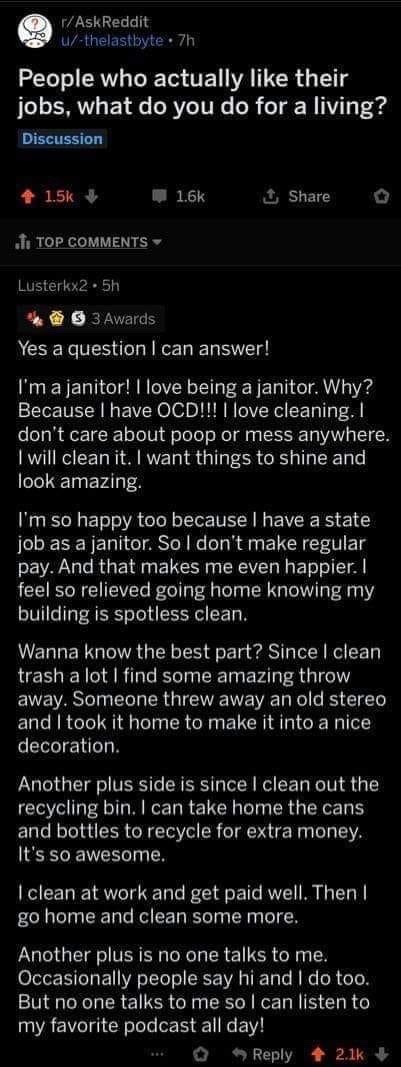
54K notes
·
View notes
Text

These children, pictured on July 26, 1937, had lived in crowded, crumbling tenements in the city. But they moved to the "ultra-modern" apartments seen in the upper right corner of the picture. It was part of the huge WPA Williamsburg low-rent slum clearance development, open to the public.
Photo: John Lindsay for the AP
#vintage New York#1930s#John Lindsay#WPA#Works Progress Administration#July 26#26 July#slum clearance#public housing#New Deal#vintage Brooklyn#slum children
60 notes
·
View notes
Text
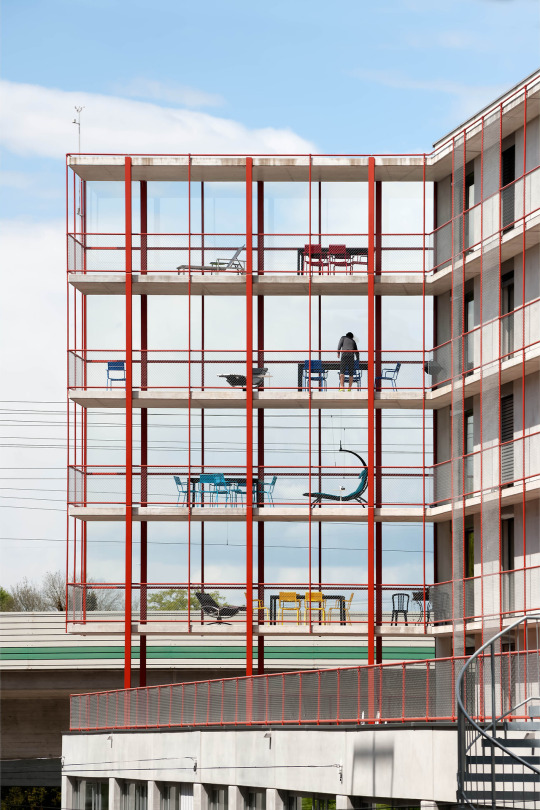
SCHNEIDER STUDER PRIMAS ZWICKY SÜD, 2016 Dübendorf, Switzerland Image © Andrea Helbling
#architecture#design#architect#art#designer#archdaily#artwork#photography#juliaknz#form#housing#public housing#social housing#swiss architecture#residential#urban living#context#architectural form#space#dezeen#ignant
76 notes
·
View notes
Text
My most left wing opinion that some leftist view as to far is
No one should own a home every single house should be owned by the local council
9 notes
·
View notes
Text
I know that, I live on LI and used to be in Manhattan, and a different part of LI, and Queens.
But NYC is important in having flat rate transportation on the MTA, which places like London and Tokyo don't. Sure, LIRR is different, but the point about NYC was more about the MTA than the boroughs themselves... and also a bit of commentary on how new public housing tends to be in the Bronx, even when the buildings that fund those public housing works are in Midtown, which is a whole... situation.
I feel like a good shorthand for a lot of economics arguments is "if you want people to work minimum wage jobs in your city, you need to allow minimum wage apartments for them to live in."
"These jobs are just for teenagers on the weekends." Okay, so you'll use minimum wage services only on the weekends and after school. No McDonald's or Starbucks on your lunch break.
"They can get a roommate." For a one bedroom? A roommate for a one bedroom? Or a studio? Do you have a roommate to get a middle-wage apartment for your middle-wage job? No? Why should they?
"They can live farther from city center and just commute." Are there ways for them to commute that don't equate to that rent? Living in an outer borough might work in NYC, where public transport is a flat rate, but a city in Texas requires a car. Does the money saved in rent equal the money spent on the car loan, the insurance, the gas? Remember, if you want people to take the bus or a bike, the bus needs to be reliable and the bike lanes survivable.
If you want minimum wage workers to be around for you to rely on, then those minimum wage workers need a place to stay.
You either raise the minimum wage, or you drop the rent. There's only so long you can keep rents high and wages low before your workforce leaves for cheaper pastures.
"Nobody wants to work anymore" doesn't hold water if the reason nobody applies is because the commute is impossible at the wage you provide.
112K notes
·
View notes
Text
Pauktuutit Inuit Women of Canada is expressing support for a proposed Inuit women’s shelter in Ottawa that is facing resistance from residents.
In a statement Wednesday, the national Inuit women’s organization said that “in response to recent reporting about the proposed women’s shelter in Ottawa’s south end,” it supports the Ottawa Aboriginal Coalition’s efforts to build the facility.
Ottawa’s Gloucester-Southgate Coun. Jessica Bradley held an information session for residents Tuesday over a proposed transfer of a vacant city-owned lot in the Hunt Club neighbourhood to the coalition.
The lot would then become the site of a new shelter dedicated for Inuit women and children fleeing violence.
“This sanctuary will provide Inuit women and their children with a safe, healthy, and culturally appropriate place to live and heal in a welcoming family-oriented neighbourhood with great access to schools, parks, and greenspace,” Bradley said in a news update posted to her website. [...]
Continue Reading.
Tagging: @newsfromstolenland, @vague-humanoid
79 notes
·
View notes
Note
So, in a very brief aside when you mentioned the spoke-and-wheel model for King's Landing. You also mentioned public housing in flea bottom, sewer and water systems, and public hospitals. I'm a little curious, what would that look like in a medieval setting? How would a system with a less developed administrative system handle public housing?
Administratively, it would be a lot simpler than our modern public/social housing system. It would probably look more like charity housing than a state system that provides comprehensive services above and beyond a roof over one's head, but it could be done in the period.

This is the Fuggerei, the world's oldest continually-operating public housing that dates back to 1514. A 52-unit walled complex, these apartment buildings were a charitable donation by the famous Fugger banking family (it's good to be the personal bankers to the Hapsburgs when the Holy Roman Emperor doesn't quite understand international arbitrage in silver prices) to the poor people of Augsberg, Bavaria.
Eligibility criteria hasn't changed: in order to be eligible, residents must be living in poverty but not have debts, they must have lived in Augsburg for two years, and they must be Catholics. Likewise, rents haven't changed much: residents of the Fuggerei pay one Rhenish gulden (roughly 1 euro) a year, must say the Lord's Prayer, a Hail Mary, and the Nicene Creed once per day for the souls of the Fugger family, and must work at least part time.
So that's what public housing in Flea Bottom might look like.
#asoiaf#asoiaf meta#king's landing#public housing#hapsburgs#early modern history#renaissance history
67 notes
·
View notes
Text
Urban Renewal vs. Public Housing: Lessons from Baltimore and Pruitt-Igoe
Urban renewal and public housing have played a central role in shaping American cities, often with conflicting results. While urban renewal aims to modernize and revitalize decaying cityscapes, it frequently displaces long-standing communities, exacerbating socioeconomic inequalities. Conversely, public housing has been used to provide affordable homes for low-income populations, yet poor planning and neglect have led to segregation, poverty concentration, and failure.
This article explores these urban planning challenges through two significant case studies: Baltimore’s Inner Harbor renewal project and the Pruitt-Igoe public housing complex in St. Louis. These examples reveal the successes and failures of 20th-century urban planning, offering critical lessons for the future of equitable city development.
The Case for Urban Renewal: Baltimore’s Inner Harbor
In the mid-to-late 20th century, Baltimore launched one of the most ambitious urban renewal projects in the U.S., aimed at revitalizing its deteriorating downtown and waterfront areas. The redevelopment of Charles Center and the Inner Harbor sought to attract businesses, tourists, and high-income residents back into the urban core.
✅ Economic Growth & Tourism Boost:
The Inner Harbor was transformed into a vibrant commercial and cultural hub, with attractions like the National Aquarium and Maryland Science Center.
New retail, office spaces, and residential developments increased property values and business investments.
✅ Mixed-Use Development & Walkability:
The project embraced modern urban design principles, making the Inner Harbor a 24-hour activity zone instead of a purely business district.
The redevelopment created public spaces, waterfront promenades, and green areas, making the area more livable and attractive.
However, despite these successes, Baltimore’s renewal came with a price—one paid disproportionately by lower-income residents.
📉 Displacement & Gentrification:
The rising cost of living forced many working-class and minority residents out of the area.
Long-standing communities were pushed to the city's margins, leading to increased inequality and social tensions.
📉 Who Really Benefited?
Many of the jobs created by urban renewal did not go to local residents but rather to suburban commuters and outside investors.
The benefits were concentrated in wealthier, predominantly White areas, deepening racial and economic disparities.
Lesson: Urban renewal can drive economic growth, but without equitable policies, it risks displacing the very communities it aims to uplift. Sustainable urban planning should incorporate affordable housing, job creation, and community input to ensure benefits reach all residents.
The Failure of Public Housing: St. Louis’ Pruitt-Igoe Disaster
While Baltimore’s renewal focused on economic revitalization, St. Louis’ Pruitt-Igoe public housing complex is a cautionary tale of poorly executed housing policies. Built in the 1950s, Pruitt-Igoe was meant to be a modern, affordable housing solution for low-income residents. However, within two decades, it became one of the most infamous failures of public housing in America.
📉 Economic & Social Isolation:
As St. Louis lost manufacturing jobs and white flight accelerated suburbanization, Pruitt-Igoe’s predominantly Black residents faced growing unemployment and poverty.
Many residents struggled to afford rent, leading to funding shortages for maintenance and services.
📉 Poor Urban Design & Maintenance Neglect:
The "towers in the park" design created isolated, unsafe spaces that became hotspots for crime.
Elevator breakdowns, vandalism, and lack of maintenance made the complex nearly uninhabitable.
📉 Demolition: The End of an Era
By the late 1960s, Pruitt-Igoe had become a symbol of public housing failure.
In 1972, just two decades after its construction, the federal government demolished the entire complex—a moment often regarded as the death of high-rise public housing projects in the U.S.
Lesson: Public housing cannot succeed without long-term economic investment, proper maintenance, and integration into the broader urban fabric. Instead of isolating low-income populations in concentrated developments, policies should prioritize mixed-income housing, economic support, and community services.
Urban Planning Lessons for the Future
The contrasting stories of Baltimore and Pruitt-Igoe illustrate the complex challenges of urban development. Both cases emphasize the need for urban planning approaches that balance economic development with social equity.
✅ Urban Renewal Should Include Community-Driven Growth
Economic development should not come at the cost of displacing vulnerable communities.
Cities must include affordable housing policies, local hiring initiatives, and resident engagement in renewal projects.
✅ Public Housing Must Be Integrated, Not Isolated
Instead of large, isolated housing blocks, urban planners should invest in mixed-income, mixed-use developments that connect residents to jobs and services.
Public housing policies should prioritize maintenance and long-term sustainability rather than quick-fix solutions.
✅ Equitable Urban Planning Requires Thoughtful Policy
Planners and policymakers must address historical inequities in housing and economic access.
Transit, education, and workforce development programs should accompany any large-scale urban redevelopment effort.
Conclusion: Rethinking Urban Development for the 21st Century
Urban renewal and public housing remain central to urban development debates today. Baltimore’s Inner Harbor shows the power of economic revitalization—but also its risks of gentrification and exclusion. Pruitt-Igoe, on the other hand, serves as a lesson in the failure of isolated, underfunded public housing projects.
For cities to create sustainable, inclusive growth, planners must move beyond outdated models and embrace community-centered, equitable policies that ensure all residents benefit from urban progress.
#smart growth#pruittlgoe#public housing#community development#housing inequality#gentrification#baltimore#city development#economic development#gis#portfolio#strong towns#urban planning#sundusbhatti
15 notes
·
View notes
Text

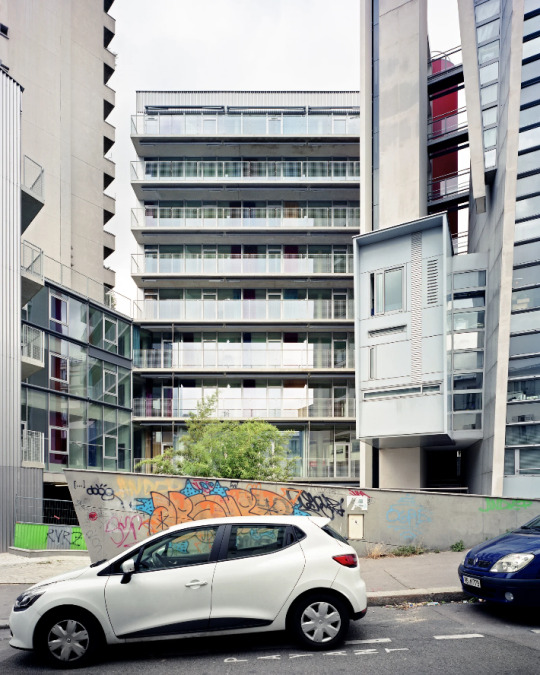



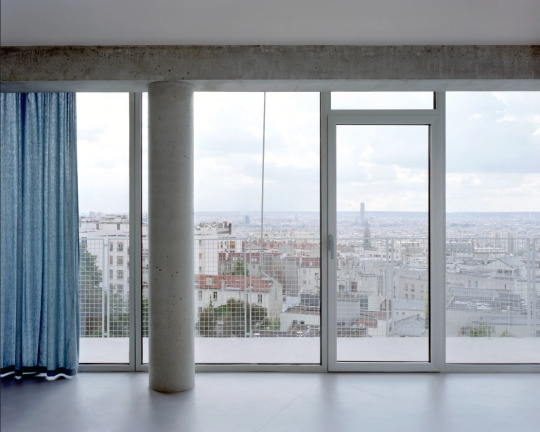
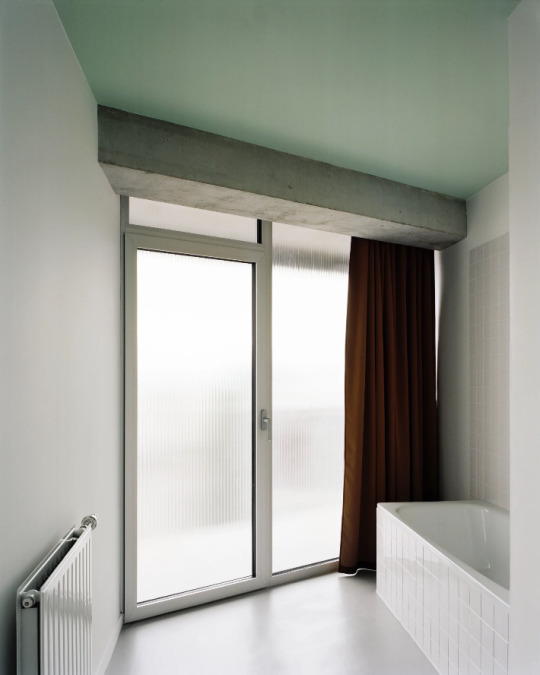
The Stopover Housing, Paris - Bruther
#Bruther#architecture#design#building#modern architecture#interiors#modern#housing#social housing#public housing#low cost#sustainable design#metal cladding#corrugated#balconies#apartments#apartment block#tower#urban#paris#french architecture
65 notes
·
View notes
Text
Catherine Borowski has always had an active imagination. As a child, she dreamed that the car park on her north London council estate would be transformed into a garden. The reality was quite different. “No one had a car, so it was empty, grey and depressing,” she says. Now a sculptor and event producer, Borowski has made it her mission to fill unloved urban spaces with flowers – albeit virtual ones.
She and her partner Lee Baker are the founders of Graphic Rewilding, a project to install huge nature-inspired artworks into the urban landscape. “Where real rewilding isn’t possible, our goal is to inject the colour and diversity of nature into rundown spaces, urging people to notice – and find joy in – the world around them,” says Baker.
The pair believe that flowers possess serious powers, even when they’re not real. “We know that spending time in nature is good for us, but studies show that even pictures of plants have a positive effect on the mind,” says Baker. He cites research published in The Journal of Alternative and Complementary Medicine, which found that imagery of plants in hospital waiting rooms can help reduce feelings of stress in patients.
Baker, a painter and music producer, has long understood the benefits of biophilic design. Having suffered a breakdown 10 years ago, he found that drawing flowers was the only way to soothe his buzzy brain. “I would set out to draw dystopian landscapes, representative of my state of mind, but I’d always end up drawing flowers, which uplifted me,” he says.
It was around this time that Baker met Borowski, joining her production company as creative director. The pair have collaborated ever since, launching Graphic Rewilding in 2021. Since then, they’ve installed floral murals at locations including Earl’s Court station, Lewes Castle and Westfield Shopping Centre in Shepherd’s Bush – all hand drawn by Baker. “We love galleries, but we focus on public art,” he says. “This way, our work is out there for everyone to enjoy.”
This year the pair have grand plans to create a series of stained glass pavilions (think greenhouses with colourful floral-themed panels), which they hope might find homes at Kew Gardens and the Eden Project. “The way light shines through the glass is magical,” says Borowski.
Even so, they concede that art is no match for Mother Nature. “Some people have suggested that our project detracts from real rewilding efforts. But both can co-exist,” says Borowski. “Of course we want more green spaces.” adds Baker. “But we aren’t gardeners. We’re artists. In the absence of nature, we want to create inspiring spaces through art.”
Overall, the response has been hugely positive. “The joy that these artworks bring is palpable,” says Baker, highlighting an early project in Crawley, West Sussex. “Many people in the town were employed by Gatwick airport and Covid had taken its toll,” he recalls. In a bid to spread some joy, the duo painted brick walls, billboards, benches and even bins with their signature floral flair. “Peoples’ reactions were heartwarming. There were so many smiling faces,” he says.
Elsewhere, in Earl’s Court, the pair transformed “a ratty piece of tarmac” into a modern-day pleasure garden, which is now often filled with children dancing and doing cartwheels on the way home from school. “Putting art into a place that previously felt unloved feels like cultivating joy where there was none,” reflects Borowski. “If something like this had been installed on my estate when I was a kid, it would have been a dream come true.”
-via Positive.News, November 6, 2023
#art#public art#mural#muralart#street mural#muralpainting#england#rewiliding#solarpunk#evidence based#stained glass#glass art#activist art#good news#hope#positive psychology#london#uk#public housing
75 notes
·
View notes
Text

"Narratives of institutional neglect and personal tragedy dominate the annals of American #PublicHousing. But sometimes, hope and real transformation can still shine through. "As the Plan for Transformation threatened the city’s oldest federal public housing development, the New Deal-era Jane Addams Homes, residents rallied to save one building as a permanent monument to the lives they had built there." Smithsonian Magazine
4 notes
·
View notes
Text

Latin American Nations like Brazil and Argentina; India; and African Nations must step up and become Democratic Nations that are WAY Better than the United States that can Accept Immigrants and Provide Humanitarian Aid! The United States is Only One Country and it is Weakening. With President Trump, Our USA has Lost Its Standing As A Leader for Amnesty. We Must Create A United Latin America and a United Africa as well as a More Advanced India that can Accept Chinese, Cuban and All Other Migrants by them Cutting Taxes for their OWN RICH FOODS COMPANIES, MANUFACTURERS, FARMS, INVESTORS, and BANKS! Cut Taxes for Everything Except for Tobacco, Alcohol and Psychoactive Marijuana and there will be Universal Corporate Healthcares All Over Latin America, Africa and Asia for All Citizens and Migrants! The Migrants coming into Our United States are Unfortunately Voting for Democrats who Raise Taxes On Our Foods Businesses, Farms and the Rich Banks that lend to them because Republican Conservatives are Spreading Communism by Kicking Out the Immigrants from the Republican Party so that Less People Vote for Tax Cuts! Republican Conservatives are TERRIBLE at Salesmanship for Business Empires whenever the Republican Conservatives Scare the Gays and Immigrants Away from Voting for Tax Cuts! With Tax Cuts, the USA, Canada, Europe, and All Other Nations can Grow Rich Money to Support All Citizens and Immigrants! McDonalds is Capitalism and Capitalism through McDonalds Supports Immigrants and Citizens Alike. 🍟💵💰🌏🌎🌍🌤️ #trump #donaldtrump #potus #jdvance #florida #oprah #oprahwinfrey #obama #biden #joebiden #msnbc #foxnews #abcnews #immigration #nytimes #nypost @nytimesbestsellingwriter #georgebush #miami #latintimes #latimes #rondesantis #rickscott #ricksanchez #cuba #cubalibre #china #chinese #india #venezuela #venezuelans #tampa #republicans #republican #democrats #democrat #gop #billclinton #billmaher
#miami herald#oprah winfrey#new york times#cspan#new york post#fox news#cnn news#cnn tonight#cnn#washington post#mcdonalds#walmart#starbucks#publix#public housing#public health#immigrants#immigration#immigratetocanada#immigratetoaustralia#inmigración#inmigrantes#inmigration#oprah#oprah book club#msnbc#msnbc news#msnbc tv
4 notes
·
View notes